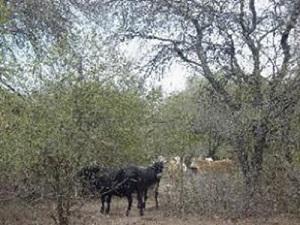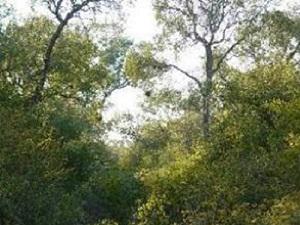Carlos Eduardo Trucco Aleman
The key objective of this study is to assess the changes in the post-dispersal seed removal of native woody plants and in the removal agents themselves (insects, small and large vertebrates) in eight woodlands with different intensities of cattle grazing in the Copo National Park and surroundings.

Extensive cattle raising in semiarid Chaco woodland. © Carlos Trucco.
The Chaco woodland is one of the most diverse and threatened ecosystems in South America. The most common land uses are forestry, extensive cattle raising, and non-irrigated agriculture. This produces a mosaic of habitats with different intensities of land use, whole effects on native flora and fauna, and on structure of vegetation are little known. In previous studies, logging and overgrazing in the Argentine Chaco diminished richness and changed species composition of ants as the degree of disturbance increased. These activities also reduced richness of the arthropod community, causing changes in the resource offer for other trophic groups. The mammal and bird communities have also shown changes in species composition and abundance when comparing forests with livestock and logging against undisturbed. However, little is known about the effects of livestock raising on plant-animal interactions.

View of Chaco woodland in Copo National Park. © Carlos Trucco.
The key objective of this study is to assess the changes in the post-dispersal seed removal of native woody plants and in the removal agents themselves (insects, small and large vertebrates) in eight woodlands with different intensities of cattle grazing in the Copo National Park and surroundings.
Per site, we will assess post-dispersal seed removal for three native plant species. Seeds will be exposed experimentally to different removal agents (insects, lizards and/or small mammals, large mammals), using selective enclosures. I will also estimate background abundance of insects, lizards, mammals and cattle with different capture techniques or indirect methods. We also will carry out seed removal experiments by offering seeds of native species to ant species and vertebrates.
The research proposed will provide new insights into the contribution of different native species to the process of seed removal in Chaco woodland and the degree to which land use (cattle raising) alters this animal-plant interaction and the assemblages of animals involved. These data will enable conservation efforts to focus on the most vulnerable and/or the most interactive of those assemblages or species. In the long term, findings on the relationship between land use intensity (cattle) and ecological processes will enhance conservation and management of this habitat and its component species. In the short term, findings will contribute to decision-making on cattle management so that their presence is compatible with biodiversity conservation goals out of protected areas.